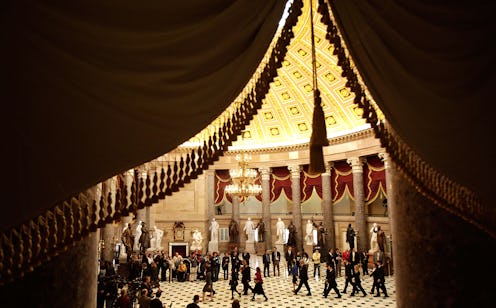With the Electoral College vote looming, there are likely many questions regarding the voting process and what exactly happens on Dec. 19. These questions include, among others, queries regarding what the Electoral College meeting agendas consist of, as well as questions on the length of the Electoral College meetings. The Electoral College meetings' agenda and length varies from state-to-state, though these meetings all share some key components.
On Dec. 19, electors from all states plus the District of Columbia will come together in separate meetings (one per state and one for the District) to officially cast their votes for President and Vice President of the United States. Across the country, there are a total of 538 members of the Electoral College voting on Dec. 19.
Electoral College meeting procedures are fairly similar across states. Electors generally come together and meet in their state capitals. Meetings are convened and usually subsequently followed by a roll call and an organization of electors, in which state electoral college officers for the meeting are selected; these officers often include those of president or chairperson and secretary. Typically, after the selection of officers, the casting of ballots for President and Vice President of the United States begins. Electors vote individually and cast separate votes for each office.
Once the electors cast their ballots, votes are tallied and the final vote count for the offices of President and Vice President are announced at the meeting. The electors at each meeting all sign six copies of a certificate of vote, which indicates the number of votes per candidate for President and Vice President. These certificates of vote are then sealed along with a certificate of ascertainment and sent to the President of the U.S. Senate as well as other federal and state offices. Once the votes are certified and sealed, meetings are typically adjourned.
While Electoral College meetings in each state generally follow a format similar to the one described above, there is no universal agenda for state Electoral College meetings and thus no designated time frame. However, in examining various 2012 Electoral College meeting minutes and 2012 C-SPAN recordings, it appears that most are relatively short — typically under an hour. While the network does not yet appear to have released its broadcast schedule for Dec. 19, it is likely that CSPAN will show at least several states' Electoral College votes live, as they did in 2012; these clips should give you a firsthand idea of the length and procedures of the meetings.
The meeting of the joint session of Congress in January, where electoral votes from all states are tallied and announced, is usually similarly short in length. Certificates of votes submitted by each state are typically read, the official total is calculated, and the declaration of President and Vice President is made. In 2012, this entire process took only approximately 20 minutes.
Overall, while the length and exact agenda of Electoral College meetings differs from state-to-state, the meetings are generally short and to-the-point, with the straightforward aim of having electors cast their votes and then certifying and sealing these votes so they can be sent to Congress. If you are interested in seeing how this process unfolds from state-to-state, make sure to tune into television news and online media on Dec. 19 — or even go directly to your state capital — to get a firsthand look at the procedures.
